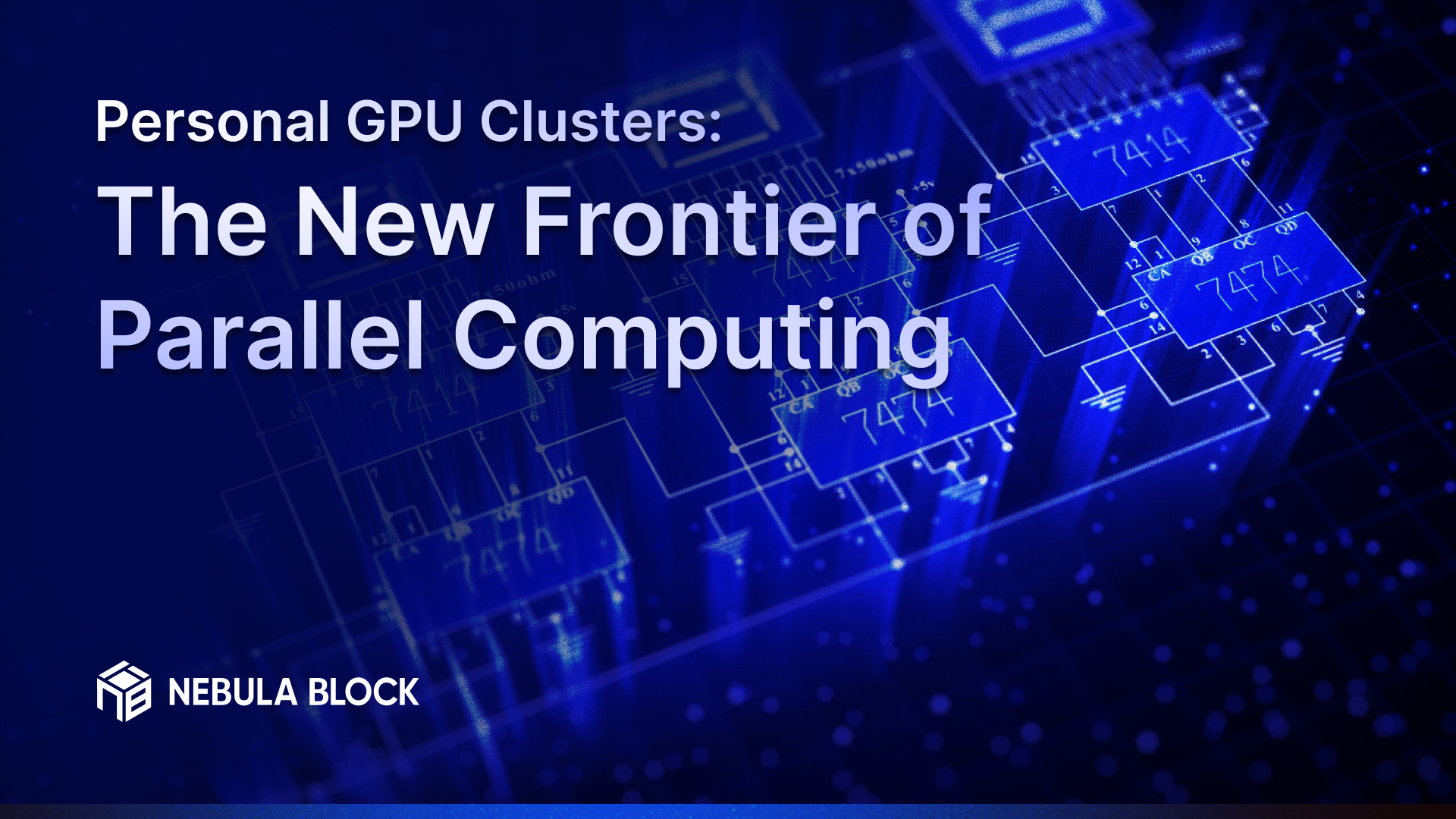Personal GPU Clusters: The New Frontier of Parallel Computing

The computational landscape is shifting dramatically. What once required million-dollar supercomputers is now achievable through personal GPU clusters and distributed parallel computing. This transformation is democratizing access to high-performance computing and enabling breakthrough innovations across AI development, scientific research, and data analytics.
The Rise of Distributed Computing
Parallel computing breaks down complex tasks into smaller components that process simultaneously across multiple GPUs. This approach has become essential for training large neural networks, processing massive datasets, and running real-time AI inference at scale.

▶️ Watch: Distributed Computing Explained
Personal GPU clusters offer several key advantages:
- Scalability: Start small and add resources as needed
- Cost Efficiency: Better price-performance ratios than traditional HPC solutions
- Accessibility: Modern platforms eliminate complex setup requirements
- Flexibility: Configure clusters for specific workloads
Real-World Applications
AI Model Development: Training large language models and computer vision systems requires substantial parallel processing. Personal clusters enable experimentation with larger models without shared resource constraints.
Scientific Computing: Researchers use parallel computing for physics simulations, chemistry modeling, and biological data analysis.
Financial Modeling: Quantitative analysts leverage parallel processing for backtesting, risk modeling, and real-time market analysis.
Creative Applications: Graphics rendering, video processing, and generative art benefit significantly from parallel GPU processing.
The Infrastructure Challenge
Building personal GPU clusters presents significant hurdles:
- High Hardware Costs: Enterprise GPUs require substantial capital investment
- Technical Complexity: Configuring distributed environments demands specialized expertise
- Maintenance Overhead: Ongoing updates, monitoring, and optimization
- Scalability Limits: Physical constraints restrict expansion capabilities
Cloud-Based Solutions: A Better Approach

Modern cloud platforms address these challenges by providing managed GPU cluster services. Nebula Block exemplifies this evolution with compelling advantages:
Cost-Effective Access: Pricing 50–80% lower than major cloud providers makes high-performance computing accessible to researchers, startups, and academic institutions.
Enterprise Hardware: Access to cutting-edge GPUs including RTX 5090, H100, and A100 systems without capital investment.
Flexible Deployment: Choose between on-demand instances, dedicated endpoints, or serverless options based on workload requirements.
Pre-Configured Environments: Essential frameworks like PyTorch distributed training, HuggingFace accelerate, and FlashAttention come ready-to-use.
Canadian Infrastructure: Data sovereignty and regulatory compliance for organizations requiring regional data residency.
Why Nebula Block?
With seven years of GPU hosting expertise, Nebula Block combines cost efficiency with technical sophistication. The platform’s serverless capabilities, including free DS-V3 model access, provide value beyond basic compute resources. S3-compatible storage and open-source framework support simplify deployment and management.
Nebula Block’s comprehensive ecosystem makes high-performance parallel computing more accessible than traditional infrastructure approaches, enabling organizations to focus on innovation rather than infrastructure management.
Know more about Nebula Block here: https://cointelegraph.com/news/canada-has-a-decentralized-ace-up-its-sleeve-in-the-global-ai-race
Democratizing High-Performance Compute
At Nebula Block, we believe world-changing ideas shouldn’t be gated by expensive infrastructure. By lowering the barrier to entry, we’re enabling innovation in places it couldn’t happen before — university labs, indie AI startups, and solo developers building tomorrow’s breakthroughs.
When computing power is no longer a bottleneck, imagination becomes the only limit.
Conclusion
Personal GPU clusters and parallel computing represent the future of computational innovation. As these technologies mature, they enable new research and development previously constrained by computational limitations.
The democratization of high-performance computing through Nebula Block ensures that breakthrough innovations aren’t limited by infrastructure barriers, but only by imagination and technical creativity.
🔗 Start building today: Explore Nebula Block.
Stay Connected
💻 Website: nebulablock.com
📖 Docs: docs.nebulablock.com
🐦 Twitter: @nebulablockdata
🐙 GitHub: Nebula-Block-Data
🎮 Discord: Join our Discord
✍️ Blog: Read our Blog
📚 Medium: Follow on Medium
🔗 LinkedIn: Connect on LinkedIn
▶️ YouTube: Subscribe on YouTube